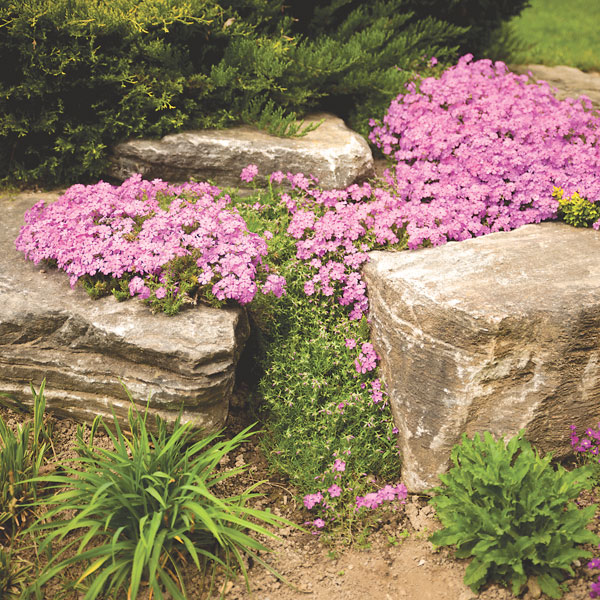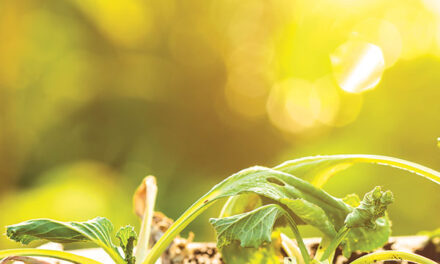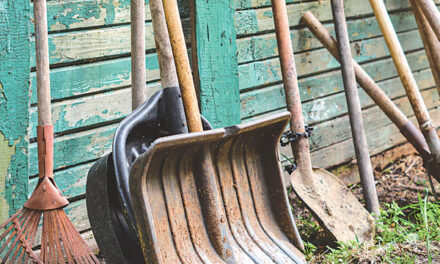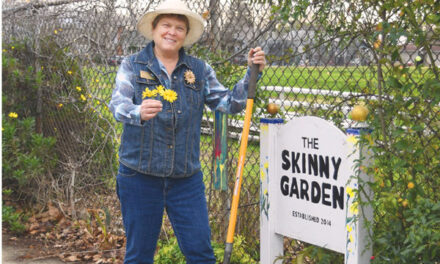Scant rainfall and drought, measured in degrees like “severe” and “extreme,” have slithered back into our lives. Folsom Lake is a mud puddle, the Sierra Nevada snowpack was 59 percent of normal and rainfall is more than a foot below average.
Sacramento did not receive an April downpour. Zero precipitation was recorded for the entire month Downtown, a record, and the driest April since 1877, when data was first collected. Not even a trace of moisture settled on lawns and flowerbeds.

According to the University of California Division of Agriculture and Natural Resources, landscape watering accounts for an estimated 50 percent of residential water consumption statewide. In the hotter inland suburban areas—think Sacramento—it jumps above 60 percent.
Persistent climate trends present landscape challenges. Parched earth dictates watering restrictions, but also triggers help through programs, rebates and educational opportunities.
The city of Sacramento offers rebates for residents who decide to swap water-guzzling lawns with water-efficient landscaping. Customers can schedule water-wise house calls where deficiencies are red flagged and water-saving tips are presented. To schedule a home visit, call (916) 264-5011.
Department of Utilities spokesperson Carlos Eliason says the city has partnered with landscape designers to help homeowners successfully plan makeovers.
“Water efficiency is important year-round and especially so during dry periods, which are becoming more frequent,” Eliason says. “Saving water can help improve flexibility with water supplies in the future and education is critical to getting that message across. During the past few years, some Sacramento residents have even combined saving water with a sense of civic pride.”
The city boasts a new demonstration garden at the Department of Utilities main office at 1395 35th Ave. It’s open to the public and features low-water plants, more efficient irrigation systems and environmentally friendly concepts. A virtual tour and information about the garden can be accessed at cityofsacramento.org/utilities/sustainability.
Unfortunately, there is the perception that water-efficient landscapes are homely, barren Las Vegas-like moonscapes of gravel, river rocks and spikey plants. Sacramento is not a desert city.
Visit the Fair Oaks Horticulture Center at the back of Fair Oaks Park and discover the beauty of low-water perennials, ground covers and trees. The front demonstration gardens are open daily from dawn to dusk and plants are labeled. A plant list, garden layout and tips on creating and caring for a new landscape are online at sacmg.ucanr.edu. Click on “Water-efficient plants” and “Drought gardening” for numerous links to information.
The UC Davis Arboretum and Public Garden is an excellent source for landscaping ideas. Visit arboretum.ucdavis.edu for a list of Arboretum All-Stars (100 plants) and another plant list with choices specific for Central Valley performance. The arboretum features several demonstration gardens open to the public focusing on low-water, year-round blooming plant choices. Admission is free.
Elk Gove maintains Rain Garden Plaza on Laguna Springs Drive across from Colton Park. Drought-resistant plants, pervious paving systems, water harvesting and other educational conservation practices are on display. Plants are labeled.
Those who decide to reduce or eliminate lawn areas may want to consider some of these plants: lavender, butterfly bush, rockrose, ceanothus, sage, penstemon, grevillea, rosemary, lantana, sedum and caryopteris. All new plantings require regular watering for the first year. Once established, water-efficient plants use much less water.
Escalating water bills and restrictions can be offset not only with water-wise plants, but simple home strategies. The Elk Grove Water District recommends prompt repair of leaky faucets, pipes and sprinkler heads.
Running lawn sprinkler systems for a couple of shorter cycles rather than one long water cycle allows water to soak in between cycles and reduces runoff. This also works well in raised vegetable beds. The Regional Water Authority has many more tips and conservation information at bewatersmart.info.
Each water district has its own prohibited practices. Check your water district website for specific information. Citations and fines are the reward for noncompliance during droughts. Good luck!
Dan Vierria is a University of California Cooperative Extension Master Gardener for Sacramento County. He can be reached at masterg29@gmail.com. For answers to gardening questions, contact the UCCE Master Gardeners at (916) 876-5338, email mgsacramento@ucanr.edu or visit sacmg.ucanr.edu. Follow us on Facebook, Twitter and Instagram: @insidesacramento.
















